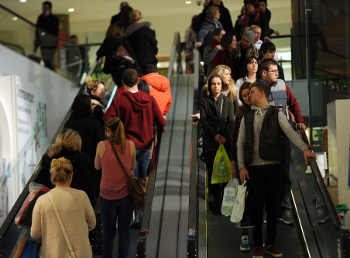Consumers anticipate higher household bills

39% of consumers report reduction in confidence on household disposable income
15 December 2014
Irish consumers’ confidence about their household disposable income has declined over the last six months, but people nevertheless expect to spend marginally more in the next six months, largely on essentials. These are among the results of the Deloitte H2 2014 Consumer Tracker.
Previously the latest overall KBC Ireland/ESRI Consumer Sentiment Index showed consumer sentiment remained broadly unchanged in November at 85.3, compared to 85.5 in October. The three-month moving average fell to 87.9 in November, from 88.5 in the previous month.
Commenting on the results, Ciara Morley, ESRI, said: “Consumer Sentiment was broadly stable in November. Consumers remain pessimistic about their current and future household finances. However, we do see monthly gains in consumers’ perception of unemployment levels over the next 12 months as well as a more positive view of the environment for purchasing durable goods.”
According to the Deloitte Consumer Tracker, over the last six months, 39% of Irish consumers have become less optimistic about their disposable household income. While 17% indicated that they are more optimistic about disposable income. 39% indicated that their level of optimism remains the same. Five per cent either didn’t know or didn’t respond.
Deloitte’s findings show many consumers have increased spending in the last six months on non-discretionary items such as utility bills (45%), transport (33%), healthcare (30%) and housing (22%). Correspondingly, respondents also reported decreased spending on more discretionary items and activities including going out (39% of respondents), restaurants and hotels (39%), alcoholic beverages (35%) and clothing and footwear (33%).
This pattern is set to continue – a considerable number of consumers believe they will spend more in the next six months on non-discretionary items such as utilities (44% of consumers), transport (24%), health (23%) and housing (21%). However, findings also indicate there will be marginal increases in spend across discretionary items as well. On average, a two percentage point increase in spending across all categories is anticipated when compared to research carried out in March 2014.
Almost half of respondents (48%) pay money into a savings account every month, while two in five are making monthly repayments on loans (39%). Just under a third (31%) have an outstanding balance on a credit card, while a similar percentage (34%) repay the total balance on a credit card. Worryingly, half of respondents indicated that they do not pay into a pension fund – and just 25% indicated that they do.
Kevin Sheehan, head of Consumer Business at Deloitte, commented: “Irish consumers remain cautious, as evidenced by the high level of savings. For retailers, the festive season will bring an obvious jump in sales but their focus must be on ensuring a strong value proposition to capitalise on this seasonal opportunity. Irish consumers are very discerning with regards to spending and outgoings, and are likely to remain so.”
Interestingly, on average across all categories examined, half of respondents indicated that they would buy whatever brands are on offer, indicating that sales and sales promotions do encourage consumers to switch brands. The categories of product that have the most brand loyalty are grocery products and cosmetics with just over one in three respondents indicating that they always buy the same brands.



 Print
Print




Fans 0
Followers